Potřebujeme váš souhlas k využití jednotlivých dat, aby se vám mimo jiné mohly ukazovat informace týkající se vašich zájmů. Souhlas udělíte kliknutím na tlačítko „OK“.
ASTM D4812-11
Standard Test Method for Unnotched Cantilever Beam Impact Resistance of Plastics
Automaticky přeložený název:
Standardní zkušební metoda pro Unnotched Výložník Odolnost proti nárazu z plastů
NORMA vydána dne 1.12.2011
Informace o normě:
Označení normy: ASTM D4812-11
Poznámka: NEPLATNÁ
Datum vydání normy: 1.12.2011
Kód zboží: NS-28696
Počet stran: 12
Přibližná hmotnost: 36 g (0.08 liber)
Země: Americká technická norma
Kategorie: Technické normy ASTM
Kategorie - podobné normy:
Anotace textu normy ASTM D4812-11 :
Keywords:
cantilever beam, impact resistance, plastic molding, unnotched, Breakage resistance, Breaking strength/tenacity, Cantilever testing, Deformation--plastics, Excess-energy pendulum-impact test, Flexural testing--plastics, Fracture testing--plastics, Impact testing--plastics, Molding/extrusion compounds/materials, Pendulum test, Plastics, Reinforced thermosetting plastics (RTP), Sheet materials (general), Shock test, Strength--plastics, Thermoplastics, Unnotched cantilever beam test
Doplňující informace
| Significance and Use | ||||||||||
|
The pendulum-impact test indicates the energy to break standard test specimens of specified size under stipulated conditions of specimen mounting and pendulum velocity at impact. The energy lost by the pendulum during the breakage of the specimen is the sum of the energies required to produce the following results: To initiate fracture of the specimen, To propagate the fracture across the specimen, To throw the free end (or pieces) of the broken specimen (toss correction), To bend the specimen, To produce vibration in the pendulum arm, To produce vibration or horizontal movement of the machine frame or base, To overcome friction in the pendulum bearing and in the indicating mechanism, and to overcome windage (pendulum air drag), To indent or deform plastically the specimen at the line of impact, and To overcome the friction caused by the rubbing of the striking nose (or other part of the pendulum) over the face of the bent specimen. For relatively brittle materials for which fracture propagation energy is small in comparison with the fracture initiation energy, the indicated impact energy absorbed is, for all practical purposes, the sum of items given in 5.2.1 and 5.2.3. The toss correction (5.2.3) may represent a very large fraction of the total energy absorbed when testing relatively dense and brittle materials. For materials for which the fracture propagation energy (5.2.2) may be large compared to the fracture initiation energy (5.2.1), factors (5.2.2, 5.2.5, and 5.2.9) can become quite significant, even when the specimen is accurately machined and positioned and the machine is in good condition with adequate capacity (Note 3). Bending (5.2.4) and indentation losses (5.2.8) may be appreciable when testing soft materials. Note 3—Although the frame and base of the machine should be sufficiently rigid and massive to handle the energies of tough specimens without motion or excessive vibration, the pendulum arm cannot be made very massive because the greater part of its mass must be concentrated near its center of percussion at the striking nose. Locating the striking nose precisely at the center of percussion reduces vibration of the pendulum arm when used with brittle specimens. However, some losses due to pendulum-arm vibration, the amount varying with the design of the pendulum, will occur with tough specimens even when the striking nose is properly positioned. In a well-designed machine of sufficient rigidity and mass the losses due to the items given in 5.2.6 and 5.2.7 should be very small. Vibrational losses (5.2.6) can be quite large when specimens of tough materials are tested in machines of insufficient mass which are not securely fastened to a heavy base. This test method requires that the type of failure for each specimen be recorded as one of the three coded categories defined as follows: C (Complete Break)A break in which the specimen is separated into two or more pieces. P (Partial Break)An incomplete break that has fractured at least 90 % of the depth of the specimen. NB (Non-Break)An incomplete break where the fracture extends less than 90 % of the depth of the specimen. For tough materials the pendulum may not have the energy necessary to completely break the extreme outermost fibers and toss the broken piece or pieces. Results obtained from “non-break” specimens shall be considered a departure from standard and shall be reported as “NB” only and a numerical value shall not be reported. Impact values cannot be directly compared for any two materials that experience different types of failure as defined by this code. Averages reported must likewise be derived from specimens contained within a single failure category. This letter code will be included with the reported impact identifying the types of failure associated with the reported value. If more than one type of failure is observed for a sample material, then the report will indicate the average impact value for each type of failure, followed by the percent of the specimens failing in that manner and identified by the letter code. The value of this impact test method lies mainly in the areas of quality control and materials specification. The fact that a material shows twice the energy absorption of another under these conditions of test does not indicate that this same relationship will exist under another set of test conditions. The ranking of materials may even be changed under different testing conditions. Before proceeding with this test method, reference should be made to the specification of the material being tested. Any test specimen preparation, conditioning, dimensions, or testing parameters, or combination thereof, covered in the material specification shall take precedence over those mentioned in this test method except in cases where to do so would conflict with the purpose for conducting testing. If there are no material specifications, then the default conditions apply. |
||||||||||
| 1. Scope | ||||||||||
|
1.1 This test method covers the determination of the resistance of plastics to breakage by flexural shock, as indicated by the energy extracted from standardized pendulum-type hammers, mounted in standardized machines, in breaking standard specimens with one pendulum swing. The result of this test method is reported as energy absorbed per unit of specimen width. Note 1—The pendulum-type test instruments have been standardized in that they must comply with certain requirements, including a fixed height of hammer fall that results in a substantially fixed velocity of the hammer at the moment of impact. Pendulums of different initial energies (produced by varying their effective weights) are recommended for use with specimens of different impact strengths. Moreover, manufacturers of the equipment are permitted to use different lengths and constructions of pendulums (with resulting possible differences in pendulum rigidities (see Section 5), and other differences in machine design). 1.2 The values stated in SI units are to be regarded as standard. The values given in parentheses are for information only. 1.3 This standard does not purport to address all of the safety concerns, if any, associated with its use. It is the responsibility of the user of this standard to establish appropriate safety and health practices and determine the applicability of regulatory limitations prior to use. Note 2—This standard and ISO 180, Method U address the same subject matter, but differ in technical content. |
||||||||||
| 2. Referenced Documents | ||||||||||
|
Podobné normy:
Historická
1.4.2012
Historická
1.11.2009
Historická
1.10.2013
Historická
1.4.2008
Historická
1.8.2010
Historická
1.10.2010
Doporučujeme:
Aktualizace technických norem
Chcete mít jistotu, že používáte pouze platné technické normy?
Nabízíme Vám řešení, které Vám zajistí měsíční přehled o aktuálnosti norem, které používáte.
Chcete vědět více informací? Podívejte se na tuto stránku.


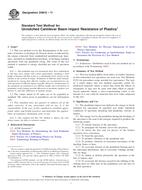
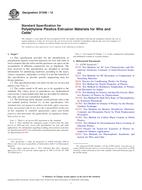 ASTM D1248-12
ASTM D1248-12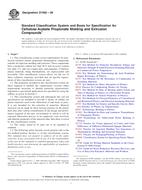 ASTM D1562-09
ASTM D1562-09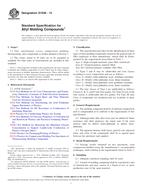 ASTM D1636-13
ASTM D1636-13 ASTM D1710-08
ASTM D1710-08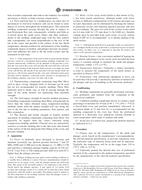 ASTM D1896/D1896M-10..
ASTM D1896/D1896M-10..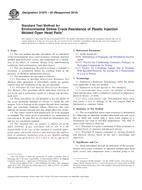 ASTM D1975-95(2010)..
ASTM D1975-95(2010)..
 Cookies
Cookies
